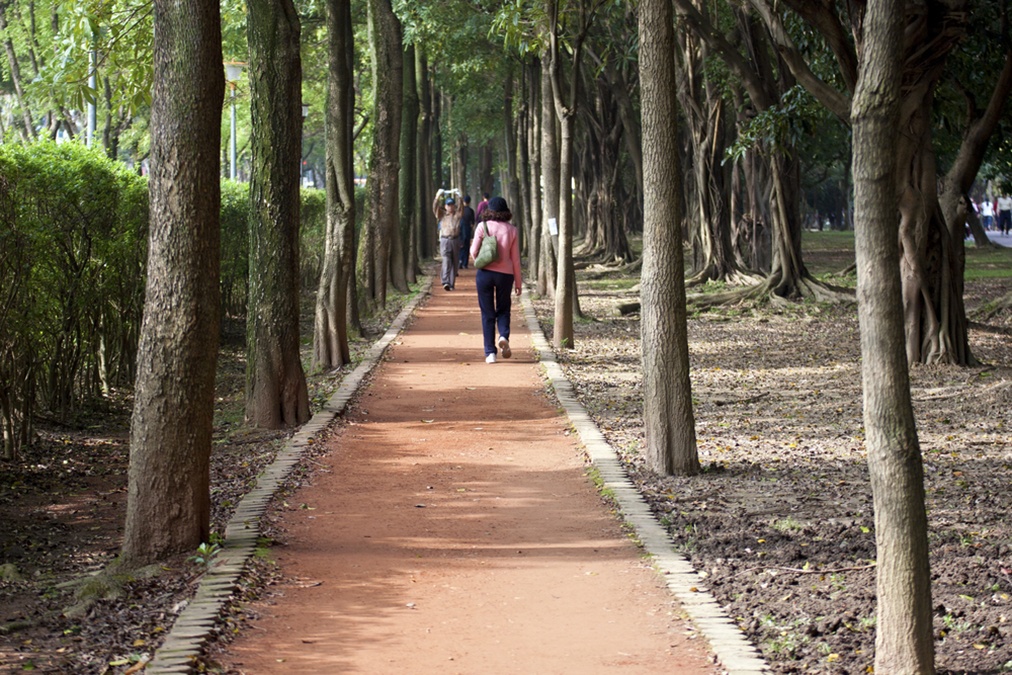 Forest bathing as a practice originated in Japan, where it has been extensively studied for its ability to remedy various diseases.
Forest bathing as a practice originated in Japan, where it has been extensively studied for its ability to remedy various diseases.
And this is catching on fast with Westerners, due to the fact that it has been proven to cure high blood pressure as well as several other diseases.
Surprisingly though, you don’t have to worry about getting wet. And you can safely do this without any medical supervision.
Forest therapy refers to the practice of walking in a forest and soaking up the atmosphere, smelling the trees and air, looking at the flowers, listening to the streams and the wind through the trees, noticing the individual bird species, feeling the leaves and roots under your feet, and so forth.
The Japanese call this forest bathing, not because you swim in a forest stream, but because you immerse yourself in nature.
Aside from being a pleasant pastime, many studies are now concluding that it might be a useful medical therapy for a wide range of conditions. Some Japanese doctors even prescribe it as an adjunct treatment for diseases, such as high blood pressure and diabetes.
Since stress contributes to so many diseases, one of the most frequently studied effects of forest therapy is its effects on stress reduction. For example, Japanese researchers published a study in the journal Public Health in 2007 that investigated the psychological effects of this therapy.
They surveyed 498 volunteers twice on the forest-walking day and twice on the control day, during which they did not visit the forest. They concluded that forest walking reduced stress; the higher the stress levels, the larger the reduction.
A well-controlled scientific study published in Environmental Health and Preventive Medicine in 2009 revealed several physical health benefits of forest walks. To demonstrate this, the scientists divided their participants into two groups.
On day one, subjects from group one were sent to a forest, and subjects from group two went to a city area. On day two, the groups swapped locations, so that each participant was studied in both the city and forest setting. Medical specialists monitored their physiological measures. Altogether, 280 people participated in the study over a one-year period.
The conclusion was surprisingly strong. Forest areas promoted lower concentrations of cortisol, lower pulse rates, lower blood pressure, greater parasympathetic nerve activity, and lower sympathetic nerve activity.
Cortisol is the hormone that contributes most powerfully to high blood pressure, and its secretion is partly brought about by overactive sympathetic nerves. This is the fight-or-flight system that many blood pressure therapies target. If your anxiety and cortisol are under control, chances are small regarding a struggle with high blood pressure.
Two years later, another research team tested the blood and urine concentrations of various hormones that contributed to hypertension and drew similar conclusions. Forest walks reduced overall blood pressure readings.
Moreover, it also reduced the concentrations of urinary noradrenaline (a blood pressure-boosting neurotransmitter that is used as a drug to treat low blood pressure) and dopamine (a precursor of adrenaline that also increases blood pressure). Furthermore, it improved their blood concentrations of adiponectin, a shortage of which has been associated with higher risk of obesity and diabetes. The report was published in the European Journal of Applied Physiology.
At this stage, most experts speculate that the effects could be in part due to phytoncides, an organic compound that plants release as a protection against fungi and bacteria.

 Overcoming IBD
Overcoming IBD Multiple Sclerosis
Multiple Sclerosis Banishing Bronchitis
Banishing Bronchitis Gum Disease Gone
Gum Disease Gone Overcoming Onychomycosis
Overcoming Onychomycosis Neuropathy No More
Neuropathy No More The Prostate Protocol
The Prostate Protocol Brain Booster
Brain Booster
 Ironbound
Ironbound
 Solution for Shingles
Solution for Shingles
 The Bone Density Solution
The Bone Density Solution
 The Ultimate Healing Protocol
The Ultimate Healing Protocol
 The Parkinson's Protocol
The Parkinson's Protocol
 The Chronic Kidney Disease Solution
The Chronic Kidney Disease Solution
 Overthrowing Anxiety
Overthrowing Anxiety The Fatty Liver Solution
The Fatty Liver Solution The Hypothyroidism Solution
The Hypothyroidism Solution
 The End of Gout
The End of Gout The Blood Pressure Program
The Blood Pressure Program
 The Oxigized Cholesterol Strategy
The Oxigized Cholesterol Strategy
 Stop Snoring And Sleep Apnea Program
Stop Snoring And Sleep Apnea Program
 The Arthritis Strategy
The Arthritis Strategy The Vertigo & Dizziness Program
The Vertigo & Dizziness Program The 3-Step Diabetes Strategy
The 3-Step Diabetes Strategy Hemorrhoids Healing Protocol
Hemorrhoids Healing Protocol The Erectile Dysfunction Master
The Erectile Dysfunction Master Weight Loss Breeze
Weight Loss Breeze The IBS Program
The IBS Program The Insomnia Program
The Insomnia Program The Migraine and Headache Program
The Migraine and Headache Program The Neck Pain Solution
The Neck Pain Solution The Menopause Solution
The Menopause Solution The Ejaculation Master
The Ejaculation Master The TMJ Solution
The TMJ Solution The Acid Reflux Solution
The Acid Reflux Solution The Fibromyalgia Solution
The Fibromyalgia Solution The Psoriasis Strategy
The Psoriasis Strategy